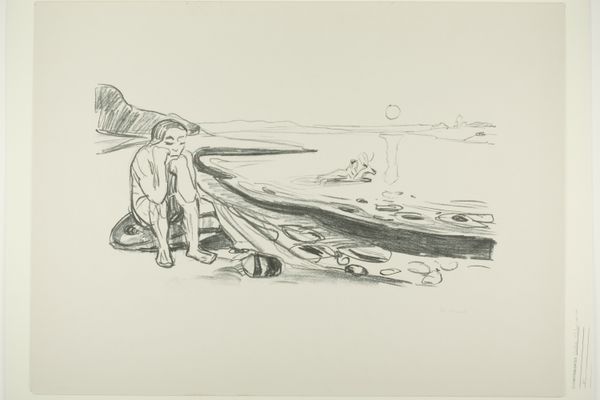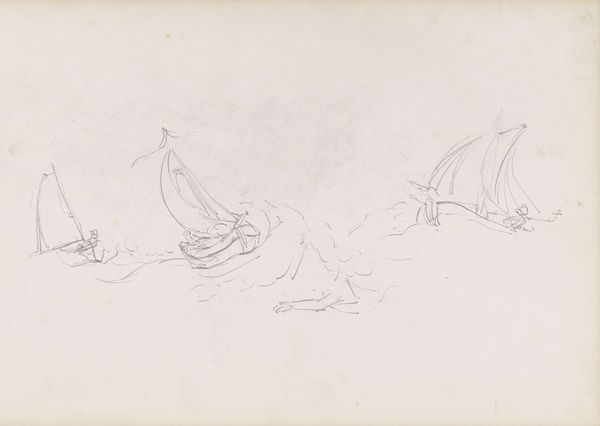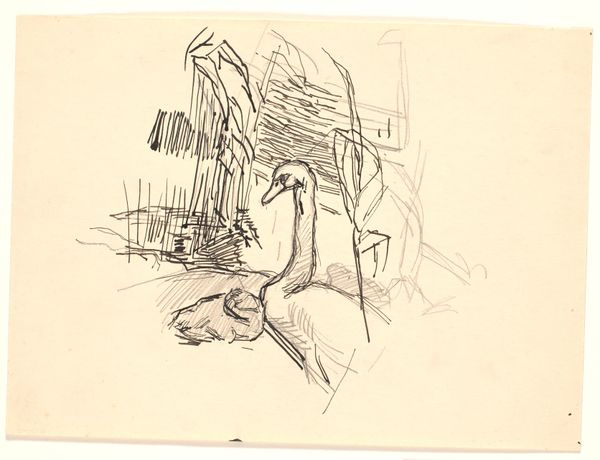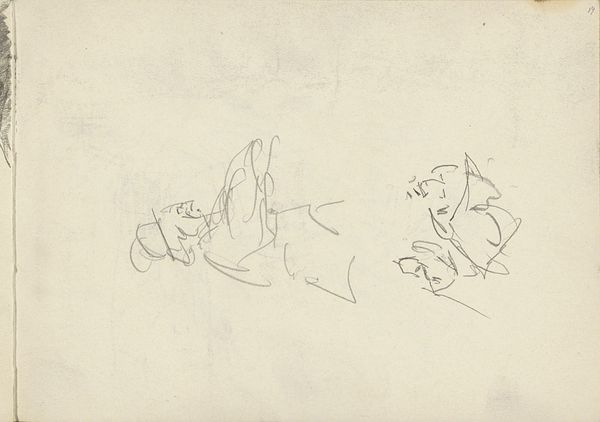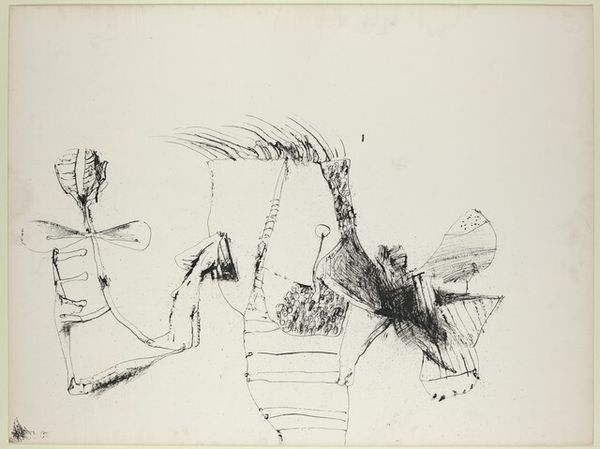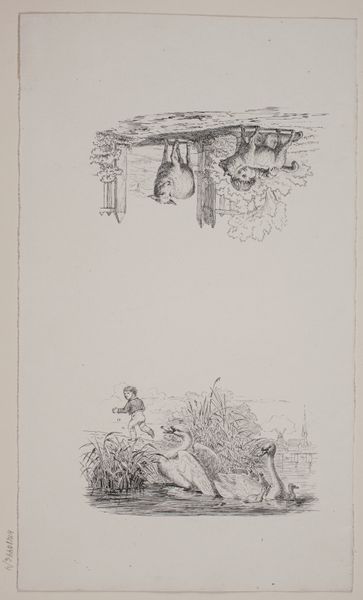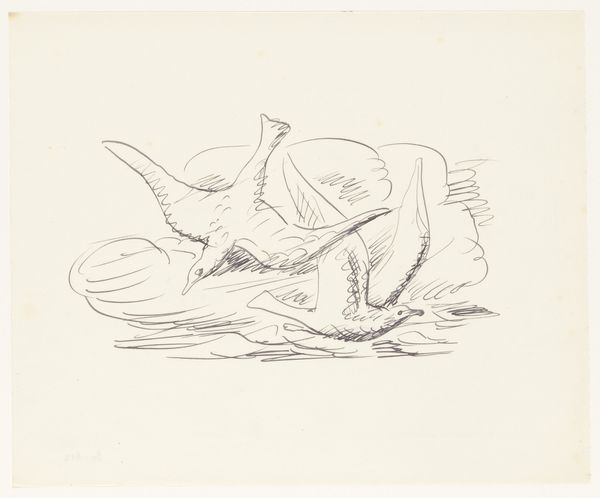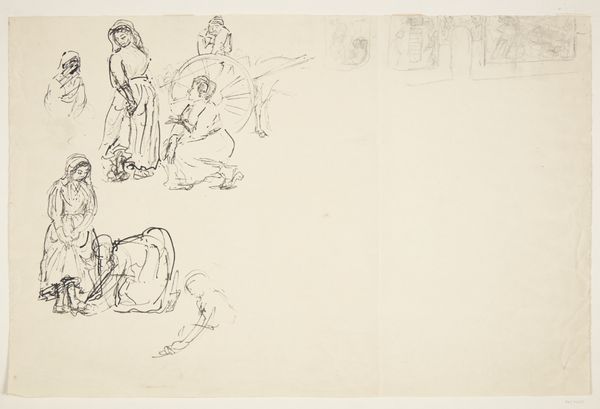
drawing, lithograph, print, paper
#
drawing
#
light pencil work
#
ink drawing
#
lithograph
#
ink paper printed
# print
#
pencil sketch
#
old engraving style
#
paper
#
organic drawing style
#
linocut print
#
ink drawing experimentation
#
pen-ink sketch
#
watercolour illustration
Dimensions: 237 × 366 mm (image); 481 × 651 mm (sheet)
Copyright: Public Domain
This is Edvard Munch's "Omega and the Deer," a lithograph. Though undated, it likely comes from his later period, made in Norway. The image depicts a nude woman, perhaps a personification of the Omega workshop, interacting with a deer, under the watchful eye of an ambiguous pair of figures. Munch was a key figure in the Symbolist movement, interested in expressing inner psychological states through simplified forms and evocative imagery. In this work, the deer and the nude woman perhaps symbolize vulnerability and innocence. The presence of the two standing figures may be a reference to the society's attitude toward the female nude figure. Munch was working at a time when the representation of the human figure was becoming increasingly fraught, as traditional academic standards came under attack from avant-garde movements. To understand Munch's prints fully, we need to look at the cultural and institutional forces that shaped his artistic production. What were the prevailing attitudes toward sexuality and the body in Norway at the time? What role did exhibitions and art criticism play in shaping Munch's reputation and career?
Comments
No comments
Be the first to comment and join the conversation on the ultimate creative platform.
